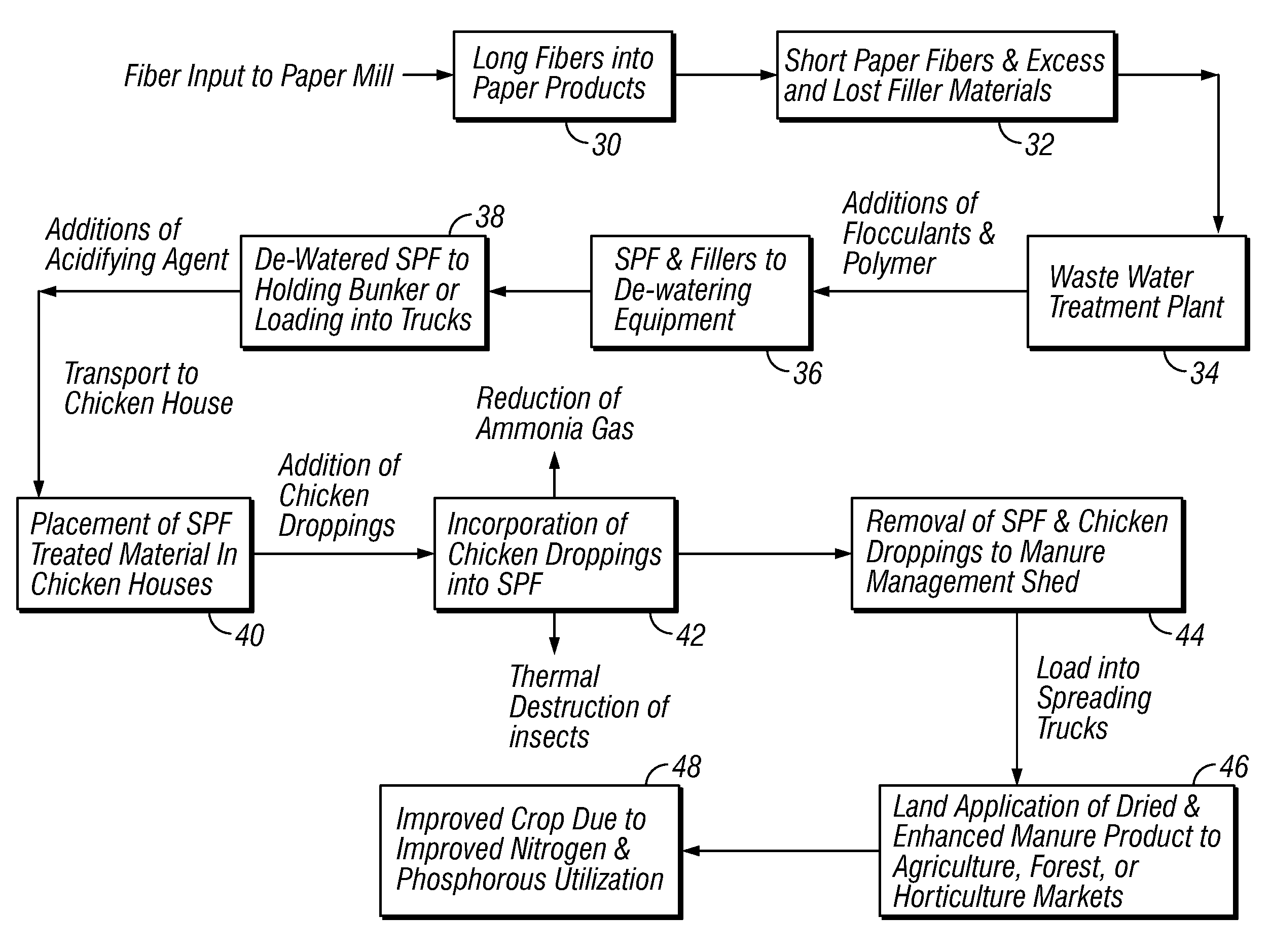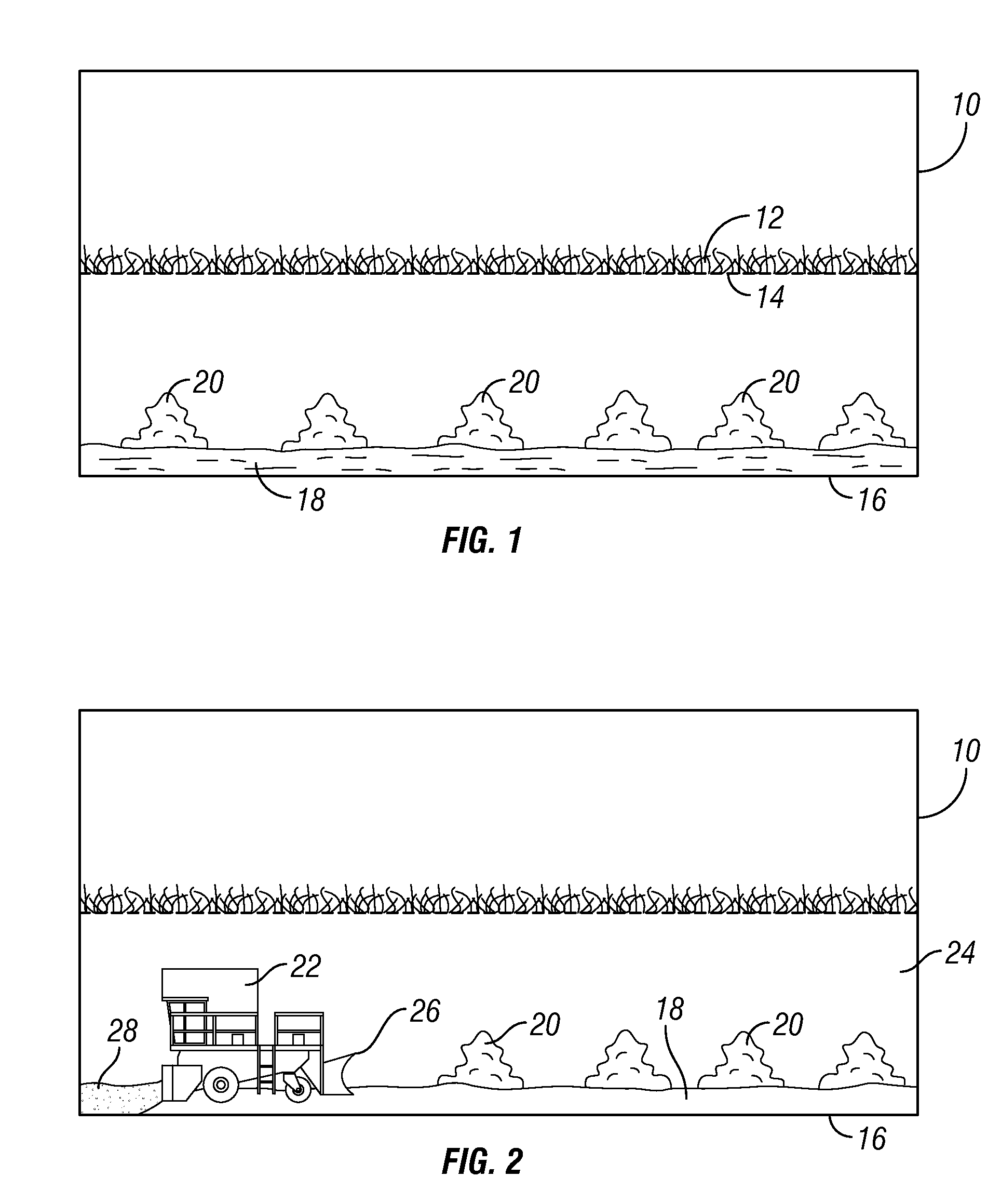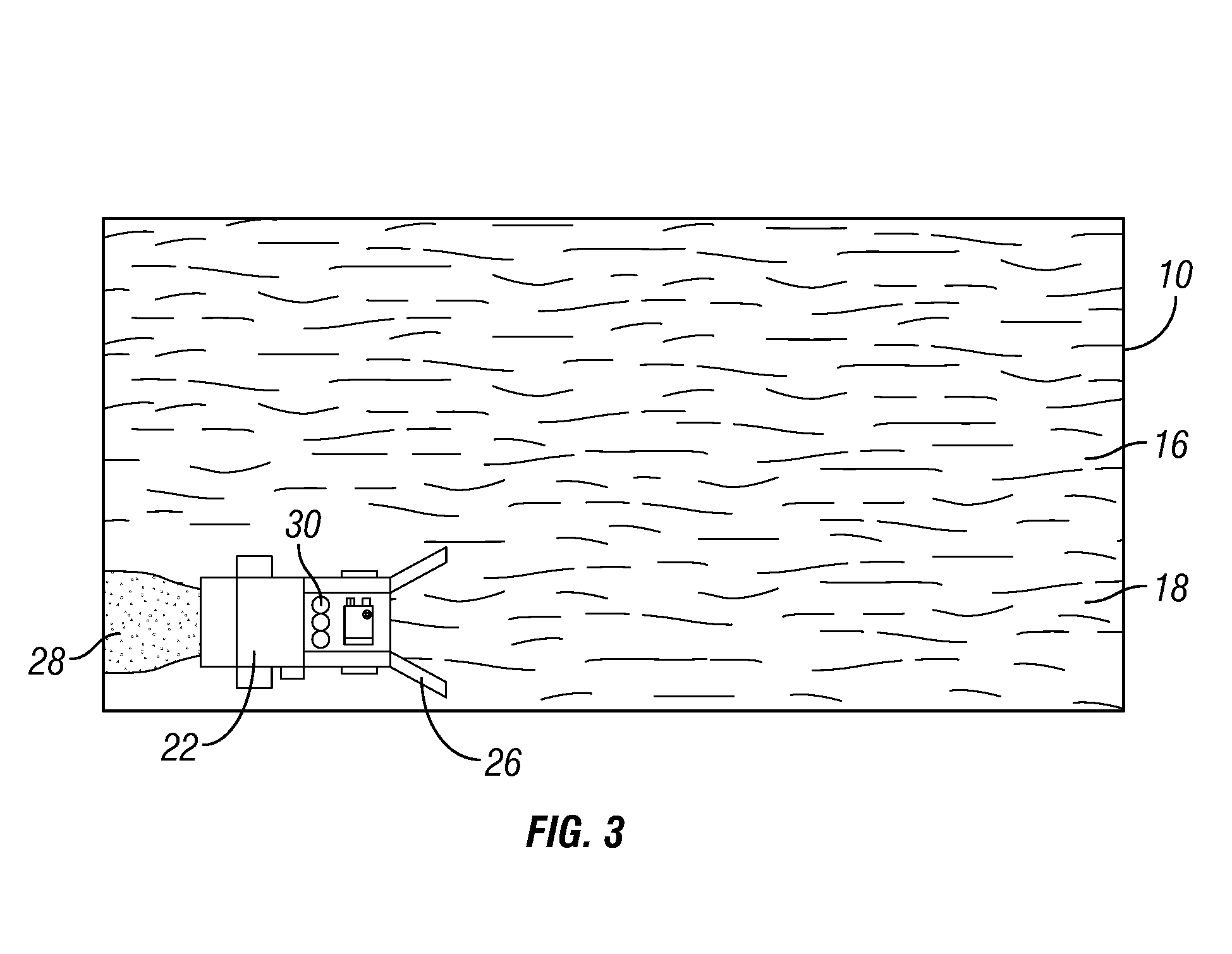Method of treating waste from a chicken house using short paper fibers
- Summary
- Abstract
- Description
- Claims
- Application Information
AI Technical Summary
Benefits of technology
Problems solved by technology
Method used
Image
Examples
Embodiment Construction
[0042]FIG. 1 shows an initial step of the method of the present invention. In FIG. 1, there can be seen a chicken house 10 that has a plurality of chickens 12 nesting on a surface 14 located well above a floor 16 of the chicken house 10. In the initial step of the present invention, a layer of short paper fibers 18 is applied across the floor 16 of the chicken house 10. This layer 18 rests below the chicken 12 such that the manure from the chickens will drop vertically downwardly upon the horizontal layer of short paper fibers 18. The manure is illustrated in piles 20 extending upwardly from the layer 18 of short paper fibers.
[0043]It should be noted that in normal operation of chicken houses, several layers of chickens 12 will reside within the chicken house 10. Various devices, such as scraper boards, are used so as to direct the manure to locations on the layer 18 of short paper fibers. These scraper boards are in the nature of inclined boards located below a particular layer of ...
PUM
 Login to View More
Login to View More Abstract
Description
Claims
Application Information
 Login to View More
Login to View More - R&D
- Intellectual Property
- Life Sciences
- Materials
- Tech Scout
- Unparalleled Data Quality
- Higher Quality Content
- 60% Fewer Hallucinations
Browse by: Latest US Patents, China's latest patents, Technical Efficacy Thesaurus, Application Domain, Technology Topic, Popular Technical Reports.
© 2025 PatSnap. All rights reserved.Legal|Privacy policy|Modern Slavery Act Transparency Statement|Sitemap|About US| Contact US: help@patsnap.com



